Review of Otogi Zoshi: Vol. 2 Enemy Shores
Introduction
It`s been a bit of a wait, but the second volume of Otogi Zoshi finally arrives. Unlike more prominent titles like Ghost In The Shell: Stand Alone Complex and She, The Ultimate Weapon, this seems to be one of Manga Entertainment`s lesser titles and gets a more staggered release schedule. It makes it harder to enjoy a series when there are four-month gaps between volumes, but on the other hand it`s an excuse to watch the first volume again.
Otogi Zoshi is a 26 episode series that has an interesting premise. It`s a story told over a thousand years with the final half set in the present day, while the first thirteen episodes are set back in the year 972 of the Heian period of Japanese history (Don`t worry if the history eludes you, as this is one anime disc with copious and relevant extra features). Coming from the powerhouse behind Ghost In The Shell Stand Alone Complex that is Studio I.G., this is a tantalising title. The story begins in a dark period of Japan`s history, the country is afflicted by disease and famine, and the cities and countryside may as well be separate states, torn apart by inter-clan feuds. There is hope though, in magical artefacts called the Magatama beads, whose power can heal the country and salve the woes of the people. It is by an Imperial decree that the Minamoto clan is responsible for their safe retrieval. Circumstances force young Hikaru no Minamoto to disguise herself as her brother Raiko and take on his mission. With her are her loyal retainer, Tsuna, warrior Sadamitsu, and mysterious guide Urabe. Volume 2 contains four episodes.
6. Noroi-jima
Urabe joins Hikaru, Sadamitsu and Tsuna as they attempt to retrieve the water Magatama. It means travelling to Noroi-jima, the island fortress of sea pirates. Tsuna has a plan to distract the guards while Hikaru retrieves the artefact, but the pirates are ready for their attack. Things look bleak enough, but there is a third party looking to assail the island.
7. Mansairaku
A tsunami has separated the travellers, and Hikaru finds herself alone, shipwrecked on a beach. The final bead is in the possession of Shuten Doji of Chinzei Island, but retrieving it looks impossible. When Hikaru is attacked by two of Shuten Doji`s guards, she finds rescue from an unexpected source. Meanwhile the others have also survived the freak wave, and while Urabe nurses Tsuna back to health, Sadamitsu picks up a hungry waif.
8. Akaoni
The travellers head for the Kumaso fortress of Shuten Doji, and the final Magatama bead. But their foes are armed with a devastating weapon, gunpowder! Fortunately Urabe is something of an alchemist, and they decide to fight fire with fire. Their enemies have more secrets to hide than just the Magatama. Sadamitsu has spied a strange blond warrior, while Shuten Doji has already put his plan in motion.
9. Darkness
Hikaru and her companions race back home to the capital, in order to warn the ministers of the impending attack. However, Raiko`s warning is laughed off as the imaginings of a young headstrong warrior. Meanwhile, Hikaru`s father wants her to give up the masquerade and settle down. The companions decide to protect the city regardless, but what they uncover is chilling. The city faces an all out assault, and the mastermind behind the conspiracy is one who has the Emperor`s ear. Then Urabe vanishes.
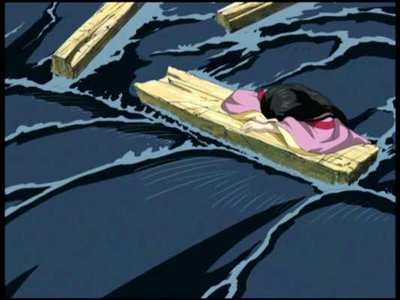
Video
The previous volume suffered a bit simply from sheer amount of data packed onto the disc. This time around, we lose a couple of featurettes, there`s one fewer episode, and subsequently there is more room for what remains. I`m glad to say that compression artefacts are significantly fewer than for the previous volume. Otogi Zoshi is presented in a 4:3 aspect ratio, and the transfer is clear, sharp and colourful. Indeed the crispness of the image and the fluidity of the animation give the distinct impression that this is not one of the usual NTSC-PAL conversions. I did notice some moiré on some fine detail, but this is still a major improvement over the first disc. The animation, as you would expect from Production I.G is something quite special. It is very stylised, the character designs are minimalist, but never to the detriment of the animation, and the look is something akin to an animated painting. Indeed, it often seems like you could pause any frame and hang it on the wall as art. It`s all very effective.
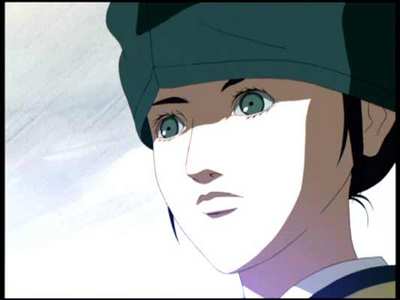
Audio
You can choose between DD 2.0, DD 5.1 and DTS soundtracks in both English and Japanese, with optional translated English subtitles in a nice white on black font. I chose the Japanese 5.1 track and it`s a fairly decent surround track, with perhaps a slightly aggressive use of the rears. The English surround track is a tad more subdued by comparison, and as usual with recent anime releases, the dub is professional and easy to listen to. The opening theme takes a little getting used to, but the closing theme is another excellent piece of music to accompany a Japanese animation. This time around, the songs aren`t subtitled, and I did note an odd word choice in one of the translations, `recuperate` for `recover` which didn`t work in the context it was used.
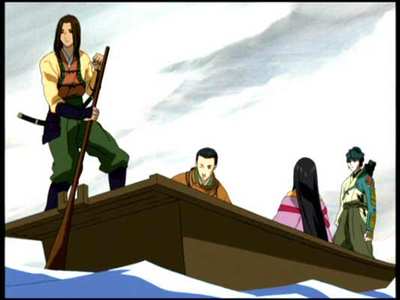
Features
This disc comes with animated menus and a play all option. If you choose the latter you`ll only have to face the logos once, but choose the episodes separately and you`ll have to sit through 11 extra seconds of CGI before each episode. Manga put the usual trailers on this disc, the Manga Attacks, Karas, Ghost In The Shell: SAC and Innocence.
There is one Group Discussion segment this time around, which lasts 23 minutes. In it, Director Mizuho Nishikubo, Character Designer Shou Tajima, Animation Director Kazuchika Kise, and Episode Director/Screenplay Yoshiki Sakurai gather for an informal chat at a bar. This time around they get technical talking about working with a 4:3 ratio, composing the image, lenses, focal lengths. Just when it gets too technical they turn their attention to the introduction of Kintaro, the waif that Sadamitsu picks up. Finally they answer a few viewer letters, where you`ll also find one or two spoilers for later in the series.
There is a Tokyo University Heian Lecture that lasts 11 minutes. Dr Kazato Hongo, Professor of History at Tokyo University was the historical consultant on the show, and he uses this opportunity to talk a little about the Heian period. This is with reference to how accurate the show is to what is known, and he examines each episode one by one, pointing out items of historical significance, and where dramatic licence was taken.
Finally there are promotion spots lasting just over a minute. Two are for the series, while two are for the Attack Haus single Zen taken from the opening credits.
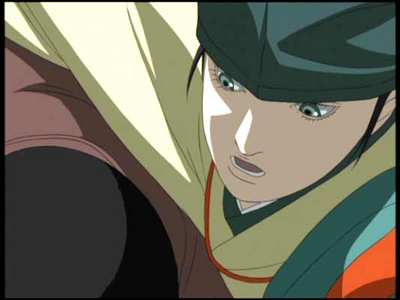
Conclusion
If the only recommendation that an anime required was beauty, then Otogi Zoshi would be an easy sell. It is without a doubt the most stylish and singular anime that I have seen. The visual aspects are astounding, through their elegance and simplicity rather than any profusion of effects and graphical expenditure. Unfortunately, there needs to be substance behind the façade, and this is where Otogi Zoshi falls a little short.
The main story is a little mundane, with travellers once again on a quest to find a treasure that will save the nation. It`s a staple genre that isn`t expanded or presented in a new way here. The main characters are all too familiar, the girl masquerading as a boy, her faithful bodyguard, the brash warrior and the mysterious guide. This volume sees the addition of the comic relief, Kintaro, the ever-hungry waif who blackmails Sadamitsu into feeding him. Otogi Zoshi is a little too staid and formal, the story a little too predictable. Ironically this comes from an attempt to be unpredictable. Each episode sees the characters make assumptions about their situation, but end up facing reversals before the end. They expect enemies, they find friends, they are told to expect danger, and they find none. This happens with a degree of regularity that made me come to expect it.
This volume does develop the relationships, and love plays a big part in what happens. Hikaru`s fascination with Mansairaku is explored here, both the outcome of Noroi-jima and Akaoni come down to the influence of love stories. Even Tsuna and Urabe develop a connection here. Meanwhile, political machinations keep on simmering in the background, plots are hatched against the Emperor, and his ministers and the enigmatic Abe no Seimei remain at the heart of it all.
My feelings for this volume are unchanged from the last time. I was entertained, the pace may be slow, but the characters are interesting and developed well, and I am intrigued by how the story will develop. Otogi Zoshi draws from a rich background; the world that the characters inhabit is a fascinating one. But once again it`s a story that is fairly run of the mill, with characters that fall neatly into familiar stereotypes and a narrative that is mundane and lacks innovation. But oh my! It is one beautiful anime.
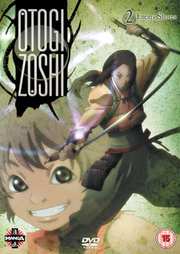




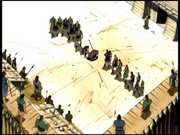
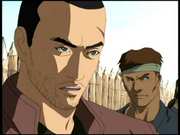
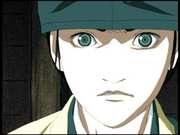
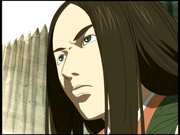
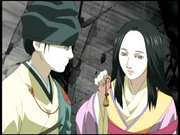
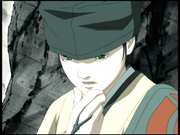
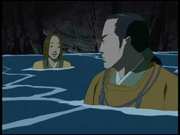
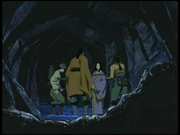
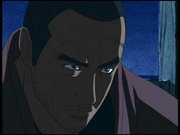
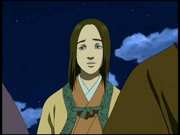


































Your Opinions and Comments
Be the first to post a comment!